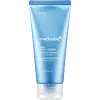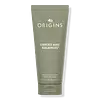What's inside
What's inside
 Key Ingredients
Key Ingredients

 Benefits
Benefits

 Concerns
Concerns

 Ingredients Side-by-side
Ingredients Side-by-side

Water
Skin ConditioningGlycerin
HumectantMyristic Acid
CleansingSorbitol
HumectantPalmitic Acid
EmollientPotassium Hydroxide
BufferingStearic Acid
CleansingLauric Acid
CleansingCetearyl Olivate
Potassium Cocoyl Glycinate
Parfum
MaskingSodium Cocoyl Isethionate
CleansingSorbitan Olivate
EmulsifyingPotassium Cocoate
EmulsifyingCoconut Acid
CleansingButylene Glycol
HumectantSodium Isethionate
CleansingSodium Polyacrylate
AbsorbentPortulaca Oleracea Extract
Skin ConditioningGaultheria Procumbens Leaf Extract
PerfumingDisodium EDTA
Camellia Japonica Flower Extract
EmollientPropanediol
SolventDiisopropyl Adipate
EmollientLecithin
Emollient1,2-Hexanediol
Skin ConditioningSaponaria Officinalis Leaf Extract
AntimicrobialAcrylic Acid/Acrylamidomethyl Propane Sulfonic Acid Copolymer
Dimethylmethoxy Chromanol
AntioxidantGlyceryl Caprylate
EmollientCitric Acid
BufferingPotassium Sorbate
PreservativeSodium Benzoate
MaskingXanthan Gum
EmulsifyingChaenomeles Sinensis Fruit Extract
AntioxidantCitrus Aurantium Dulcis Flower Extract
Skin ConditioningMelissa Officinalis Leaf Extract
Skin ConditioningWater, Glycerin, Myristic Acid, Sorbitol, Palmitic Acid, Potassium Hydroxide, Stearic Acid, Lauric Acid, Cetearyl Olivate, Potassium Cocoyl Glycinate, Parfum, Sodium Cocoyl Isethionate, Sorbitan Olivate, Potassium Cocoate, Coconut Acid, Butylene Glycol, Sodium Isethionate, Sodium Polyacrylate, Portulaca Oleracea Extract, Gaultheria Procumbens Leaf Extract, Disodium EDTA, Camellia Japonica Flower Extract, Propanediol, Diisopropyl Adipate, Lecithin, 1,2-Hexanediol, Saponaria Officinalis Leaf Extract, Acrylic Acid/Acrylamidomethyl Propane Sulfonic Acid Copolymer, Dimethylmethoxy Chromanol, Glyceryl Caprylate, Citric Acid, Potassium Sorbate, Sodium Benzoate, Xanthan Gum, Chaenomeles Sinensis Fruit Extract, Citrus Aurantium Dulcis Flower Extract, Melissa Officinalis Leaf Extract
Water
Skin ConditioningSilica
AbrasiveCI 77220
Cosmetic ColorantGlycerin
HumectantStearic Acid
CleansingCetyl Esters
EmollientCetyl Alcohol
EmollientCaprylic/Capric Triglyceride
MaskingKaolin
AbrasivePotassium Stearate
CleansingGlyceryl Caprylate
EmollientDecyl Glucoside
CleansingMentha Viridis Leaf Oil
AstringentCitrus Aurantium Bergamia Fruit Oil
MaskingLavandula Hybrida Oil
EmollientPelargonium Graveolens Flower Oil
MaskingAnthemis Nobilis Flower Oil
MaskingStyrax Benzoin Gum
MaskingLimonene
PerfumingLinalool
PerfumingBambusa Arundinacea Stem Extract
Skin ConditioningTourmaline
Sodium Hyaluronate
HumectantLaminaria Saccharina Extract
Skin ProtectingGlycine Soja Oil
EmollientSucrose
HumectantCaprylyl Glycol
EmollientCaffeine
Skin ConditioningEthylhexylglycerin
Skin ConditioningButylene Glycol
HumectantTocopherol
AntioxidantXanthan Gum
EmulsifyingPEG-100 Stearate
Magnesium Aluminum Silicate
AbsorbentBentonite
AbsorbentSodium Phytate
Phenoxyethanol
PreservativeCI 77891
Cosmetic ColorantAquilaria Agallocha Wood Oil
MaskingWater, Silica, CI 77220, Glycerin, Stearic Acid, Cetyl Esters, Cetyl Alcohol, Caprylic/Capric Triglyceride, Kaolin, Potassium Stearate, Glyceryl Caprylate, Decyl Glucoside, Mentha Viridis Leaf Oil, Citrus Aurantium Bergamia Fruit Oil, Lavandula Hybrida Oil, Pelargonium Graveolens Flower Oil, Anthemis Nobilis Flower Oil, Styrax Benzoin Gum, Limonene, Linalool, Bambusa Arundinacea Stem Extract, Tourmaline, Sodium Hyaluronate, Laminaria Saccharina Extract, Glycine Soja Oil, Sucrose, Caprylyl Glycol, Caffeine, Ethylhexylglycerin, Butylene Glycol, Tocopherol, Xanthan Gum, PEG-100 Stearate, Magnesium Aluminum Silicate, Bentonite, Sodium Phytate, Phenoxyethanol, CI 77891, Aquilaria Agallocha Wood Oil
 Reviews
Reviews

Ingredients Explained
These ingredients are found in both products.
Ingredients higher up in an ingredient list are typically present in a larger amount.
Butylene Glycol (or BG) is used within cosmetic products for a few different reasons:
Overall, Butylene Glycol is a safe and well-rounded ingredient that works well with other ingredients.
Though this ingredient works well with most skin types, some people with sensitive skin may experience a reaction such as allergic rashes, closed comedones, or itchiness.
Learn more about Butylene GlycolGlycerin is already naturally found in your skin. It helps moisturize and protect your skin.
A study from 2016 found glycerin to be more effective as a humectant than AHAs and hyaluronic acid.
As a humectant, it helps the skin stay hydrated by pulling moisture to your skin. The low molecular weight of glycerin allows it to pull moisture into the deeper layers of your skin.
Hydrated skin improves your skin barrier; Your skin barrier helps protect against irritants and bacteria.
Glycerin has also been found to have antimicrobial and antiviral properties. Due to these properties, glycerin is often used in wound and burn treatments.
In cosmetics, glycerin is usually derived from plants such as soybean or palm. However, it can also be sourced from animals, such as tallow or animal fat.
This ingredient is organic, colorless, odorless, and non-toxic.
Glycerin is the name for this ingredient in American English. British English uses Glycerol/Glycerine.
Learn more about GlycerinGlyceryl Caprylate comes from glycerin and caprylic acid, a fatty acid from coconut. It has emollient and emulsifier properties.
As an emollient, it helps hydrate your skin. Emollients work by creating a barrier on your skin to trap moisture in, helping to keep your skin soft and smooth.
On the other hand, emulsifiers prevent ingredients (such as oil and water) from separating.
Learn more about Glyceryl CaprylateStearic Acid is a fatty acid. It is an emollient, emulsifier, and texture enhancer.
As an emollient, stearic acid helps soften skin. It aids the skin's protective barrier by preventing water loss. It also provides a gentle cleansing effect without stripping away natural oils.
Stearic acid may also be used to enhance the texture of products. It can add volume and stabilize ingredients such as water and oil. This can help water and oil ingredients from separating.
Sources of stearic acid include animal or vegetable fats/oils such as coconut or shea. It can be naturally found in butter, cocoa butter, shea butter, vegetable fats, and animal tallow.
This ingredient may not be Malassezia folliculitis, or fungal-acne safe.
Learn more about Stearic AcidWater. It's the most common cosmetic ingredient of all. You'll usually see it at the top of ingredient lists, meaning that it makes up the largest part of the product.
So why is it so popular? Water most often acts as a solvent - this means that it helps dissolve other ingredients into the formulation.
You'll also recognize water as that liquid we all need to stay alive. If you see this, drink a glass of water. Stay hydrated!
Learn more about WaterXanthan gum is used as a stabilizer and thickener within cosmetic products. It helps give products a sticky, thick feeling - preventing them from being too runny.
On the technical side of things, xanthan gum is a polysaccharide - a combination consisting of multiple sugar molecules bonded together.
Xanthan gum is a pretty common and great ingredient. It is a natural, non-toxic, non-irritating ingredient that is also commonly used in food products.
Learn more about Xanthan Gum